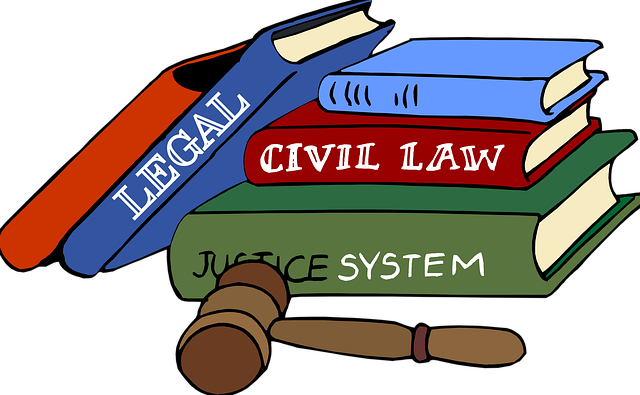Calculating damages in personal injury cases involving fraudulent financial practices is a complex process. It requires understanding specific case circumstances, including injuries and losses, to determine compensation for both economic and non-economic damages. Attorneys play a crucial role in navigating legal frameworks, presenting evidence, and ensuring clients recover fair reparation while holding perpetrators accountable.
Fraudulent financial practices, often cloaked as legitimate business operations, pose significant risks to investors and individuals alike. This article delves into the intricate world of fraudulent schemes, with a focus on understanding their complex nature. We explore the legal framework surrounding personal injury claims, emphasizing the crucial aspect of calculating damages, including economic and non-economic losses. Furthermore, we provide strategies for navigating the justice system to secure compensation in cases involving these insidious practices.
- Understanding Fraudulent Financial Schemes
- Legal Framework for Personal Injury Claims
- Calculating Economic and Non-Economic Losses
- Strategies to Secure Compensation in Court
Understanding Fraudulent Financial Schemes

Fraudulent financial practices can take many forms, from complex Ponzi schemes to more subtle misrepresentations and falsifications. Understanding these schemes is crucial for both victims seeking justice and legal professionals aiming to achieve extraordinary results for their clients. One common thread across various fraudulent activities is the intent to deceive, often leading to significant financial losses for individuals and institutions alike.
Calculating damages in personal injury cases, which can be a result of such fraudulent practices, requires meticulous attention to detail. By examining financial records, expert analyses, and legal precedents, attorneys can help clients recover compensation that reflects the full extent of their losses. Avoiding indictment and successfully prosecuting perpetrators are critical steps in restoring trust and ensuring accountability for those engaging in these illicit financial schemes.
Legal Framework for Personal Injury Claims

When navigating fraudulent financial practices that lead to personal injury, understanding the legal framework is paramount. The process begins with evaluating the specific circumstances of each case, including the type and extent of injuries sustained, resulting financial losses, and the role of negligence or intentional misconduct. This is where calculating damages in personal injury cases becomes a critical component – determining the compensation needed to achieve extraordinary results for affected individuals or corporate and individual clients alike.
The legal system provides a structured approach to assess these damages, which can encompass medical expenses, loss of earnings, pain and suffering, and other related costs. In high-stakes cases, meticulous record-keeping and expert testimony are often required to ensure fairness and accuracy in calculating the full extent of losses. This process is designed to offer justice and provide a sense of accountability for those engaged in fraudulent financial practices that result in personal harm.
Calculating Economic and Non-Economic Losses

When discussing fraudulent financial practices, calculating damages is a complex task that goes beyond mere monetary figures. In personal injury cases stemming from white-collar and economic crimes, assessing losses involves both economic and non-economic components. Economic losses refer to tangible costs like medical expenses, lost wages, and property damage, which can be relatively straightforward to quantify.
Non-economic damages, on the other hand, encompass elements like pain and suffering, emotional distress, and loss of quality of life—these are more subjective and require meticulous consideration. Jurors or judges often play a crucial role in determining these non-monetary losses, relying on their understanding of community standards and the specific circumstances of each case. This process involves navigating intricate financial landscapes and understanding the far-reaching impacts of fraudulent activities on individuals and the philanthropic and political communities they engage with. For his clients, ensuring that damages are accurately calculated is paramount to receiving just compensation for both economic and non-economic losses suffered.
Strategies to Secure Compensation in Court

When pursuing compensation through the legal system for fraudulent financial practices, understanding how to calculate damages is paramount, especially in personal injury cases. The assessment of damages should encompass both direct and indirect losses incurred by the victim. This includes any financial gains lost due to the deceit, as well as physical, emotional, or psychological trauma that may have long-term economic implications.
A robust strategy for securing compensation involves presenting a detailed breakdown of these damages in court. This might include medical bills, lost wages, and other out-of-pocket expenses directly related to the fraudulent act. Additionally, it’s crucial to demonstrate how the fraud has impacted your respective business or financial stability, especially when pursuing a general criminal defense for his clients. By meticulously documenting and presenting these losses, victims can increase their chances of receiving fair and just compensation from the perpetrators of fraudulent financial practices.
In navigating fraudulent financial practices, understanding these schemes and their legal implications is paramount. By grasping the intricacies of calculating damages in personal injury cases—including economic and non-economic losses—individuals can better secure compensation. Employing effective strategies in court ensures a stronger hand against wrongdoers, fostering a more accountable financial landscape. Remember that, in light of these practices, knowledge is power, and every step taken towards justice contributes to a safer, fairer world.






